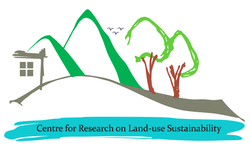A new estimate of carbon for Bangladesh forest ecosystems with their spatial distribution and REDD+ implications
|
Sharif A. Mukul1,2,3,*, Shekhar R. Biswas4, A. Z. M. Manzoor Rashid5, Md. Danesh Miah6, Md. Enamul Kabir7, Mohammad Belal Uddin5, Mohammed Alamgir6,8, Niaz Ahmed Khan9, Md. Shawkat Islam Sohel1, Mohammad Shaheed Hossain Chowdhury10, Md. Parvez Rana11, Syed Ajijur Rahman12,13, Mohammed Abu Sayed Arfin Khan5,14 and Muhammad Al-Amin Hoque2,15
1School of Agriculture and Food Sciences, The University of Queensland, Brisbane, QLD 4072, Australia 2School of Geography, Planning and Environmental Management, University of Queensland, Brisbane, QLD 4072, Australia 3Centre for Research on Land-use Sustainability, Maijdi, Noakhali 3800, Bangladesh 4Department of Biology, York University, 4700 Keele Street, Toronto, ON M3J 1P3, Canada 5Department of Forestry and Environmental Science, School of Agriculture and Mineral Sciences, Shahjalal University of Science and Technology, Sylhet 3114, Bangladesh 6Institute of Forestry and Environmental Sciences, University of Chittagong, Chittagong 4331, Bangladesh 7Forestry and Wood Technology Discipline, Life Science School, Khunla University, Khulna 9208, Bangladesh 8Centre for Tropical Environmental and Sustainability Sciences, School of Earth and Environmental Sciences, James Cook University, Cairns, QLD 4870, Australia 9Department of Development Studies, University of Dhaka, Dhaka 1000, Bangladesh 10Department of Forest Science, Faculty of Agriculture, Shinshu University, 8304 Minamiminowa-Mura, Nagano-Ken, Japan 11School of Forest Sciences, University of Eastern Finland, P.O. Box 111, FI – 80101 Joensuu, Finland 12Center for International Forestry Research (CIFOR), Bogor, Barat 16680, Indonesia 13Forest and Landscape, University of Copenhagen, 1958 Frederiksberg, Denmark 14Department of Disturbance Ecology, University of Bayreuth, 95440 Bayreuth, Germany 15Department of Geography and Environment, Jagannath University, Dhaka 1100, Bangladesh *Corresponding author: e-mail: [email protected], [email protected] ABSTRACT: In tropical developing countries, reducing emissions from deforestation and forest degradation (REDD+) is becoming an important mechanism for conserving forests and protecting biodiversity. A key prerequisite for any successful REDD+ project, however, is obtaining baseline estimates of carbon in forest ecosystems. Using available published data, we provide here a new and more reliable estimate of carbon in Bangladesh forest ecosystems, along with their geo-spatial distribution. Our study reveals great variability in carbon density in different forests and higher carbon stock in the mangrove ecosystems, followed by in hill forests and in inland Sal (Shorea robusta) forests in the country. Due to its coverage, degraded nature, and diverse stakeholder engagement, the hill forests of Bangladesh can be used to obtain maximum REDD+ benefits. Further research on carbon and biodiversity in under-represented forest ecosystems using a commonly accepted protocol is essential for the establishment of successful REDD+ projects and for the protection of the country’s degraded forests and for addressing declining levels of biodiversity. Key-words: carbon budget, forest conservation, forest ecosystem, REDD+, Bangladesh. Subject areas: Bangladesh, Asia, Biomass carbon, Forest conservation Recommended citation: Mukul, S.A., Biswas, S.R., Rashid, A.Z.M.M., Miah, M.D., Kabir, M.E., Uddin, M.B., Alamgir, M., Khan, N.A., Sohel, M.S.I., Chowdhury, M.S.H., Rana, M.P., Rahman, S.A., Khan, M.A.S.A., Hoque, M.A., 2014. A new estimate of carbon in Bangladesh forest ecosystems with their spatial distribution and REDD+ implications. International Journal of Research on Land-use Sustainability, 1(1): 33-41. DOI: 10.13140/RG.2.1.4864.2166. |
Received: June 1, 2014 Accepted: July 15, 2014 Communicated by: Dr. Tapan Sarker Griffith University Australia Download: |


